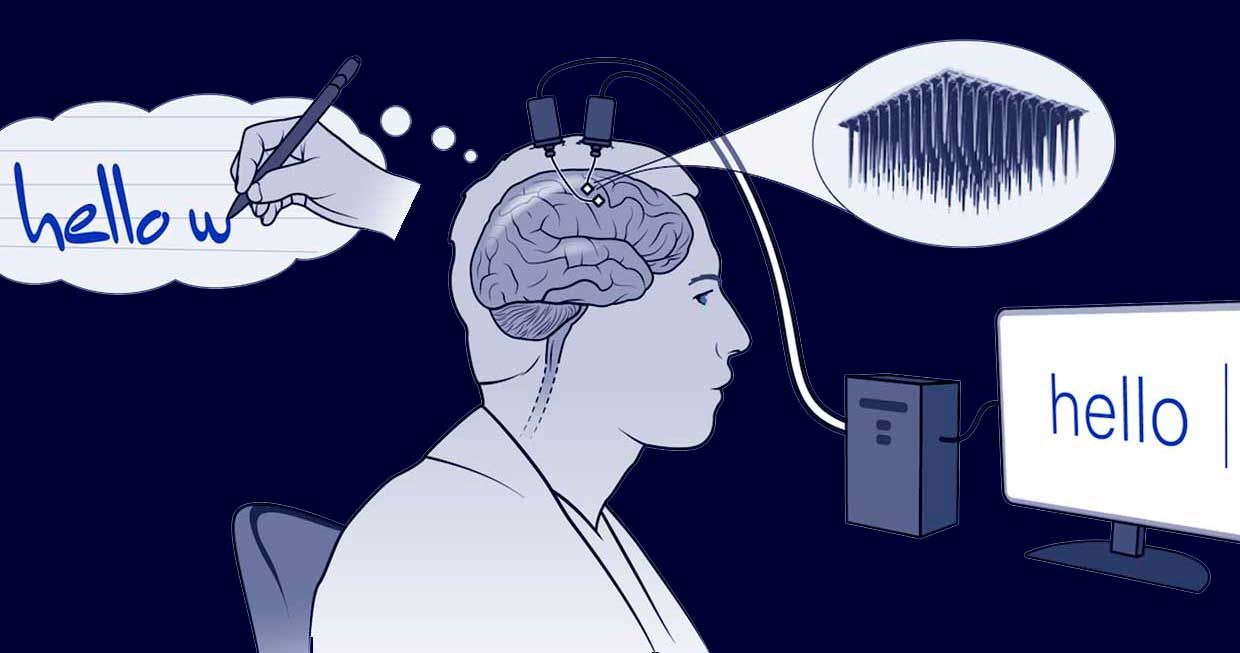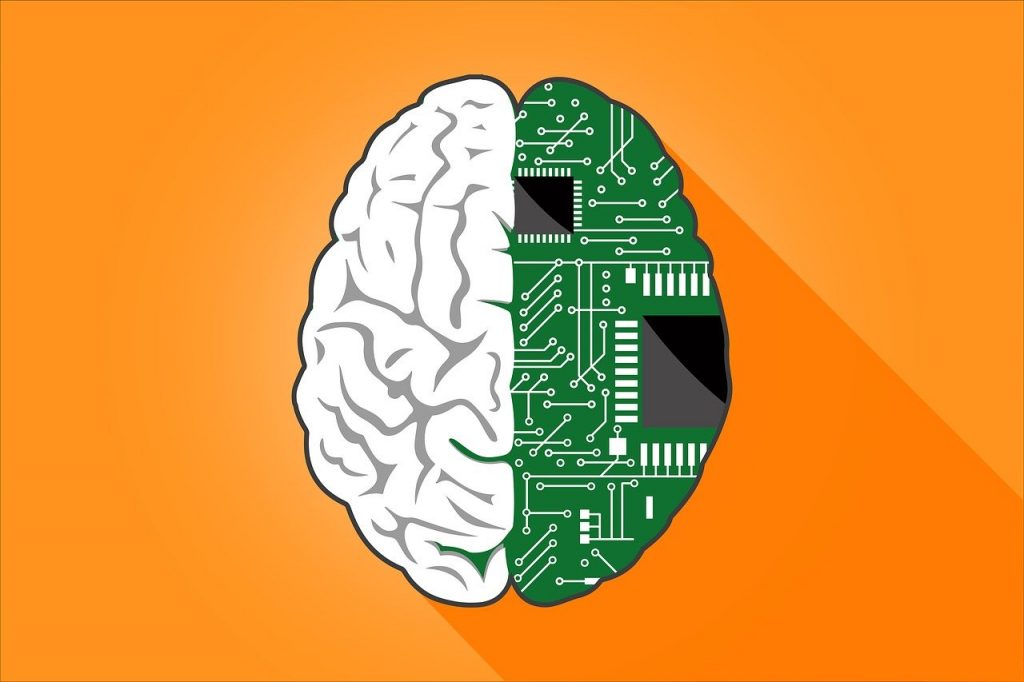
A group of technologies known as the brain-computer interface (BCI) has been suggested as helpful technology for people who are non-communicative or paralyzed, such as those who have spinal cord injuries or amyotrophic lateral sclerosis. According to the technology’s suggestions, companies are presently promoting BCI devices for both health-related and enhancement and amusement uses, such as gaming. The first-ever direct link established by BCI between human minds and computer hardware presents a number of moral, societal, and legal issues that call for further analysis and debate.
As a result, there isn’t agreement on what BCIs are. For instance, while some academics define stimulating devices, like auditory implants, others do not. There are, however, a few points of agreement that define BCI as a device that recognizes brain signals that express purpose and transforms them into executable output by a computer. In other words, it creates a non-muscular transmission route between a computer and a brain by directly connecting real neuronal tissue to artificial devices. BCIs, for instance, can be used as spellers for people who have no other means of communication, can offer locked-in or paralyzed people some control over their surroundings, and may even be able to help with spinal cord injury recovery through artificial means.
The BCI, which enables output communication from a person to a device, works as follows: a person’s brainwaves are monitored by either an invasive device (an implanted chip) or a non-invasive device (such as a wearable headset with electrodes) and then transferred into a device that uses specific algorithms to process the recorded brainwaves. These brainwaves are converted into the appropriate commands, which a connected gadget carries out. This tool could be a computer system or a prosthetic limb that allows users to write on a screen by concentrating on the characters or phrases they want to use.
The paper examines the BCI’s legal ramifications in relation to the pertinent basic human rights. In particular, the effect of technology on human dignity, the right to privacy, and freedom of speech are looked at. Recommendations for future government actions are made in the conclusion. Instead of restricting it or using the technology for governmental purposes, legislators should closely examine the technology and lay out a legislative structure that would use brain-computer interfaces to expand human freedoms and rights.
How does Brain Computer Interface affect Law?

Legal systems are frequently challenged by new tools that challenge established ideas about how things are done and controlled. To maintain social equilibrium in the face of challenges to social ideals and morality, new strategies must be developed. The challenges presented by BCIs and specific basic liberties are discussed in detail below.
Human Dignity and Brain Computer Interface
An essential legal term, the idea of human dignity serves as the foundation from which the ideas of human equality and core human rights are drawn. All people are born free and equal in their rights, according to Article 1 of the Universal Declaration of Human Rights. They should behave towards one another in a respectful way because they have reason and consciousness. In this respect, human dignity and the equality principle must also serve as a safeguard against attempts by positive law to undermine this principle, which is also the foundation of justice. There are various interpretations of what dignity is. The first idea connects the idea of human worth—a special importance of a human being that people recognize themselves—to the idea of dignity.
A powerful psychological argument also supports the idea of upholding human dignity, as regard for one another and refraining from using people or particular groups of people as instruments that deter violence in society. In this regard, BCIs have the potential to either completely suppress a person’s autonomy or to completely broaden it by giving her more options for making decisions (for example, a BCI that makes it possible for a person to move more easily or communicate with their environment gives her new options to achieve her goals).
As was shown above, a neural system can be stimulated using a variety of techniques in such a way that a person lacks control over, for example, the motoric action of their own limbs. A person could be made into a biological tool that could be remotely managed and used by others to further their goals by using certain technological techniques. However, such use starkly defies any notion of human dignity, whether it be the notion emphasizing a person’s worth or the notion concentrating on equitable and polite relationships between humans.
Right to Privacy

A globally recognized basic human right is the freedom to privacy. The right to privacy is enshrined in the Indian Constitution‘s Article 21 Right to Life. The same was acknowledged in the Puttaswamy v. Union of India case in 2017. Louis D. Brandeis and Samuel D. Warren first described the right to privacy in 1890. “The right to be alone” was their shorthand definition of the right to privacy. Other definitions of privacy exist, such as Posner’s that an individual has the right “to conceal discreditable facts about himself” or Westin’s that an individual has authority over their own personal data.
A person’s ability to maintain good mental health depends on their ability to have privacy. When considering the potential of BCIs, the concept of maintaining one’s own private area seems to vanish. In addition to the fact that people are presently subject to a variety of monitoring technologies that invade their personal space, the final barrier symbolized by the impenetrability of the mind may soon be dismantled.
Unfortunately, in order to operate, BCIs are forced to continuously track the neural activity of their users, which necessitates the collection and processing of highly delicate and inherently private user data. The technology even aspires to the point where it will be possible to genuinely read minds and decipher the substance of those being watched’s thoughts. It goes without saying that such mental encroachment violates a person’s most private space.
Since ensuring this right has biological justification for allowing people to operate regularly and without dread of exposure, making them extremely vulnerable, the law would need to find a method to protect it.
Does Brain Computer Interface interfere with the Freedom of Thought?
The right to freedom of thought is observed in the Universal Declaration of Human Rights, in Article 18: “Everyone has the right to freedom of thought, conscience, and religion; this right includes freedom to change his religion or belief, and freedom, either alone or in community with others and in public or private, to manifest his religion or belief in teaching, practice, worship, and observance.”
The right to privacy and the right to free speech are intertwined in the setting of BCIs. In the past, people believed that ideas were private by nature and inaccessible to others. Technology has, however, altered the circumstance.
Given how humans process information psychologically, BCIs pose a significant danger to intellectual freedom. People might be compelled to alter their “inner lives” if they were threatened with being watched in their minds. People who are scared of other people may restrict the range of their ideas, which will negatively affect their intelligence, fantasies, and cognitive skills. A person’s mental well-being and overall sense of personality may suffer significantly.
Freedom of Expression
Article 19 of the Constitution of India guarantees freedom of speech and expression to every person in India. One crucial factor needs to be taken into account when analyzing the connection between BCIs and freedom of speech. Ideas and thoughts have traditionally been seen as ethereal and thus not being an expression. On the other hand, since they have a particular bodily ingrained form, recorded brainwaves that correspond to interior ideas may be regarded as an expression. However, a significant issue surfaces in this regard. A person is frequently asked to consider a certain way in order to guarantee a BCI’s efficacy. She is therefore asked for a particular expression, which may restrict the extent of the independence that is promised. Social pressure would compel people to use their thoughts in a specific way, potentially in conflict with other promised basic rights, especially if BCI technology were to be widely used for everyday contact or verification.
Conclusion
Clearly, the possibility of brain-computer interactions is enormous. Particularly concerning is the potential use of BCIs to effectively and directly manipulate a person’s nervous system and brain. With the ability to operate an interface of an embedded stimulating device or a wearable device that can mimic different regions of the brain with ultrasound, a person could easily turn into a puppet in the hands of another person. In addition, technology has the potential to seriously affect a person’s uniqueness by altering their perspective and perhaps making them more vulnerable. The advancement of BCIs should be encouraged to the fullest extent feasible as they have an obviously positive potential when used appropriately and for justifiable purposes.
To stop technology abuse, however, so-called risk management steps must be implemented. Legislators ought to carefully consider the technology and lay out a structure for using brain-computer interactions in a way that expands rather than restricts human liberties and rights. Furthermore, the technology should never be used for public reasons. Since everyone in society is treated equally, their integrity and right to privacy should always be protected to avoid any potential misuse that can occur when working “for the higher good of society.”